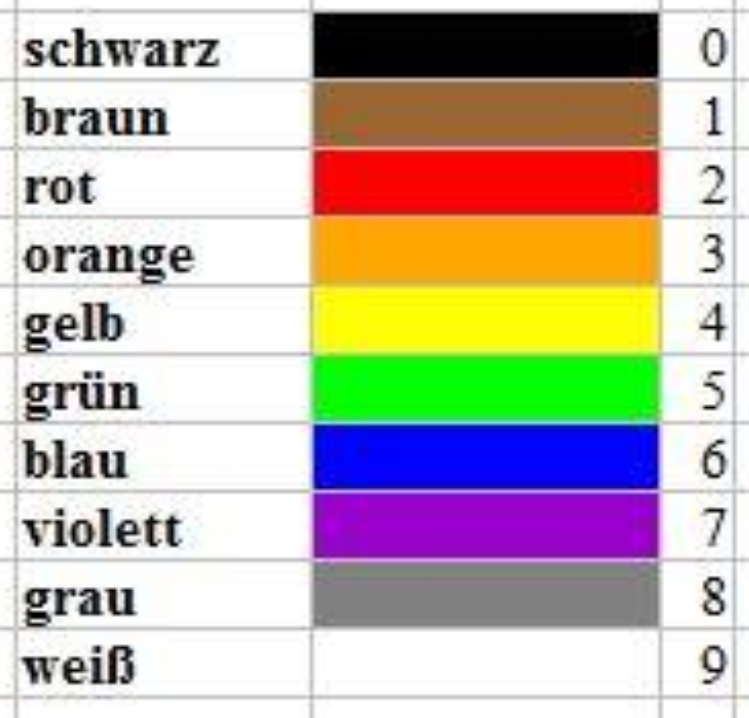Many mysteries encode the coordinates with the help of colours. This also has the advantage of making the listing pretty colourful 😉
Resistance colour code
One of the most frequently encountered is the resistance colour code. Mostly without, but sometimes with calculation of the current that remains. But there are enough calculators on the internet for this as well. In the simple version, a colour simply corresponds to a digit, which can then be used further, depending on the puzzle.

RAL colours
The standardised RAL colours are also used very frequently. Either as a used colour or as a used colour value (for example, lemon yellow is RAL 1012 and strawberry red RAL 3018 ). The colour values are also available in English.
Hex colour codes
If these two don’t help solve the puzzle, maybe the HEX colour code will. Here are a few sample colours and their hexadecimal values.
Hex value gimmicks are very popular among mystery makers anyway and, conveniently, colours can be displayed on web pages in hex code. So once again a look at the HTML source code helps. If there is text written in two different colours, these could perhaps already be the north and east coordinates.
The two words “coordinates ” and ” coding ” have these colour definitions in the source code:
font color=”#500AEE” and font color=”#E6E0E”
Converting the two HEX numbers used into decimals gives 5245678 and 945678 . So beautiful coordinates if you just add a few dots and degrees. N 52° 45.678 and E 9° 45.678 (this coordinate is of course only an example. If there are really cans there or at other points mentioned here in the Blo(g)ck, please give me a friendly hint so that I can (they log???? *hihi* no! of course) modify these examples here.
In addition to colour values, the 16 primary colours in HTML can also be referred to by their English names (e.g. blue or yellow).
RGB colours
The HEX representation of colours is just a different representation of RGB colours. RGB means Red-Green-Blue and describes an additive colour space; that is, the representation of colours by mixing the three primary colours (red, green and blue). Expressed in numbers from 0 to 255, this results in the representation in the RGB colour space. Common image editing programmes such as Gimp or Photoshop display the RGB colours for each image pixel. For example, if there is an image with only two colours in the listing, their RGB colour values could also be a starting point for a solution.
And what else could there be
Now these were the more common colour equivalents. Depending on the owner, his preferences and the theme of the listing, there are of course about infinite other possibilities. For example, the HKS colour fan, the colours of TÜV plates, light-emitting diodes, the wavelengths of light, hexahues, the colour numbers of Edding pencils, colour filter foils and much more, which it no longer makes sense to mention individually here.
Just have a look at the tool on colour spaces.
Colourful but almost unknown outside of geocaching code lists: Honey Code and Color Takki Code. These are simply alphabets consisting of coloured diamonds or dashes. Also possible would be a numbering of the rainbow colour spectrum: red 1, orange 2, yellow 3, green 4, blue 5, violet 6 (thanks to Thomas from the comments).
Just one thing: are there perhaps up to 10 different colours in the puzzle, repeated alternately? Then maybe one colour stands for one digit? Are there more than 20? Then maybe one colour stands for one letter? The chapter on letter frequencies and manual decoding may help (besides diligence).
Just have a look at the symbol tables of the GC Wizard.
